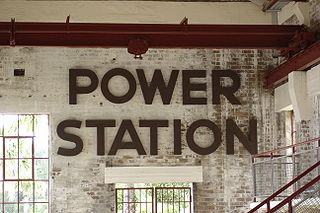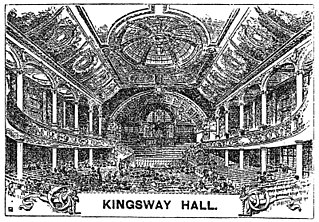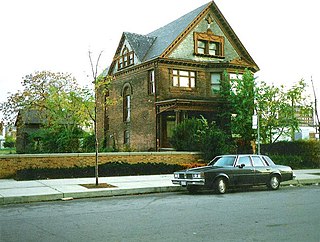 W
WThe Al-Shifa pharmaceutical factory in Khartoum North, Sudan, was constructed between 1992 and 1996 with components imported from Germany, India, Italy, Sweden, Switzerland, Thailand and the United States. It was opened on 12 July 1997 and bombed by the United States on 20 August 1998.
 W
WThe Aladdin was a hotel and casino located on the Las Vegas Strip in Paradise, Nevada. Toy manufacturer Edwin S. Lowe originally opened the 450-room Tallyho Hotel on the property in 1962. The Tallyho was the only major hotel in Nevada to not include a casino; it closed at the end of the year and was sold to Kings Crown Inns of America, a hotel chain which reopened the property a month later as the King's Crown Tallyho. The company added a casino and showroom but plans to open the casino were halted when the Nevada Gaming Control Board declined to issue a gambling license because of concerns about the resort being inadequately financed.
 W
WPlanet Hollywood Las Vegas is a casino hotel on the Las Vegas Strip in Paradise, Nevada. It is owned and operated by Caesars Entertainment. The property was previously the site of an earlier resort known as the Aladdin, which operated from 1962 to 1997. It was demolished in 1998, to make room for a new resort that would also be named Aladdin. The new Aladdin resort opened in August 2000, but suffered financial difficulties and was eventually purchased in 2003 by a partnership of Planet Hollywood and Starwood, which renamed it as Planet Hollywood in 2007.
 W
WAndreyevsky Bridge name refers to a historical bridge demolished in 1998 and three existing bridges across Moskva River, located between Luzhniki and Gorky Park in Moscow.
 W
WAstor Theater was a historic movie theater located at Reading, Berks County, Pennsylvania. It was designed by architect William Harold Lee in the Art Deco style, and built in 1928. The theater seated 2,478. It operated until 1975, then was demolished in 1998 to clear space for the Sovereign Center arena. Some architectural details, such as the ornate chandelier and gates, were salvaged from the Astor Theatre and recycled in the Sovereign Center.
 W
WThe Atlantic Steel Company was a steel company in Atlanta, Georgia with a large steel mill on the site of today's Atlantic Station multi-use complex.
 W
WThe Balmain Power Station was located at Iron Cove, 4 km (2 mi) from Sydney in New South Wales, Australia. The station no longer exists and residential properties now occupy the site. This plant is often confused with the White Bay Power Station, the remains of which are still standing in Rozelle.
 W
WThe Baltic Exchange was a building located at 24–28 St Mary Axe in the City of London and occupied by Baltic Exchange Ltd, a provider of information on maritime transportation markets. A historic landmark, the Baltic Exchange building was architecturally known for its cathedral-like trading hall and its stained glass war memorial. It was damaged in a bombing in 1992. The site is now occupied by 30 St Mary Axe ; the stained glass can be seen at the National Maritime Museum.
 W
WBuilding 20 was a temporary timber structure hastily erected during World War II on the central campus of the Massachusetts Institute of Technology. Since it was always regarded as "temporary", it never received a formal name throughout its 55-year existence.
 W
WThe El Vernona Hotel–John Ringling Hotel was a famous hotel located at 111 North Tamiami Trail in Sarasota, Florida, United States.
 W
WThe First Parsonage for Second East Parish Church was an historic church parsonage at 41 S. Main Street in Attleboro, Massachusetts. Built in 1822, it was a good local example of Federal period architecture. At the time of its listing on the National Register of Historic Places in 1980, it was the oldest documented building in the town center. It was demolished in 1998.
 W
WHouston Music Hall was a 2,200-seat music venue located in Houston, Texas. The Music Hall opened in November 1937, at the same time as the Sam Houston Coliseum, which were built conjointly as the brainchild of Jesse H. Jones, and designed by Alfred C. Finn, his frequent collaborator. The project was financed by the Works Progress Administration at a cost of $1.3 million, and replaced Sam Houston Hall, which was a wooden structure that had been erected on the site for the 1928 Democratic National Convention and torn down in 1936.
 W
WThe J. L. Hudson Building ("Hudson's") was a department store located at 1206 Woodward Avenue in downtown Detroit, Michigan. It was constructed beginning in 1911, with additions throughout the years, before being "completed" in 1946, and named after the company's founder, Joseph Lowthian Hudson. Hudson's first building on the site opened in 1891 but was demolished in 1923 for a new structure. It was the flagship store for the Hudson's chain. The building was demolished in a controlled demolition on October 24, 1998, with many people watching from Hart Plaza (Detroit) and Dieppe Gardens. It was the tallest building ever imploded.
 W
WJefferson Theater was a historic theatre building located at Punxsutawney, Jefferson County, Pennsylvania. It was built about 1905, and consisted of a lobby section connected to the auditorium. The lobby measured approximately 70 feet long and 12 feet wide. It connects to the approximately 70 feet wide and 107 feet long auditorium. The auditorium had a balcony and sat over 1,200. It closed in 1978 and was Punxsutawney's only remaining theater. It was demolished in 1998.
 W
WThe Kingsway Hall in Holborn, London, was the base of the West London Mission (WLM) of the Methodist Church, and eventually became one of the most important recording venues for classical music and film music. It was built in 1912 and demolished in 1998. Among the prominent Methodists associated with the Kingsway Hall was Donald Soper, who was Superintendent Minister at the West London Mission from 1936 until his retirement in 1978.
 W
WThe Knights of Columbus Building, also known as the Aero Club Building, in Portland, Oregon, was a Late Gothic Revival architecture building that was built in 1920. It was listed on the National Register of Historic Places from 1990 until its demolition. The building was demolished in 1998. The property is now the site of the Paramount Hotel.
 W
WThe Lake Michigan High-Rises (CHA), also known as Lakefront Homes (CHA), was a Chicago Housing Authority (CHA) public housing project in the North Kenwood–Oakland neighborhood located on the south side of Chicago, Illinois, United States. Constructed in 1962 and completed in 1963, The Lake Michigan High-Rises (CHA) originally consisted of four 16–story buildings; totaling 457 units. The Lake Michigan High-Rises (CHA) was located west of Lake Shore Drive and was included as a part of the CHA Lakefront Properties. Today, only two buildings of the Lakefront Properties exist; they were officially renamed from Victor Olander Homes to Lake Parc Place in 1991. The other four high–rises were demolished by implosion in December 1998, it was the first and only to date in Chicago Housing Authority history.
 W
WThe McGraw–Hill Building was a 16-story, 190-foot-tall (58 m) landmark building in the Near North Side community area of Chicago, Illinois, at 520 N. Michigan Avenue. The facade and its architectural sculpture by Chicago-born artist Gwen Lux were designated a Chicago Landmark on February 7, 1997. The building was demolished in 1998; however, its facade was saved and reinstalled in 2000 on the new Le Méridien Chicago hotel building. The hotel was renamed the Conrad Chicago in 2005. The hotel was again renamed in 2015, becoming The Gwen, for sculptor Gwen Lux, and is part of The Luxury Collection.
 W
WThe Obee House was a historic house at 1642 Green Bay Road in Highland Park, Illinois. The house was built circa 1874 for the Obee family, who owned the house for a century following its construction. The house had a vernacular clapboard form with Victorian elements. Its decorative features included a bay window and hooded window moldings. Its interior featured a wooden staircase, detailed baseboards, and pine flooring.
 W
WThe Ohio Penitentiary, also known as the Ohio State Penitentiary, was a prison operated from 1834 to 1984 in downtown Columbus, Ohio, in what is now known as the Arena District. The state had built a small prison in Columbus in 1813, but as the state's population grew the earlier facility was not able to handle the number of prisoners sent to it by the courts. When the penitentiary first opened in 1834, not all of the buildings were completed. The prison housed 5,235 prisoners at its peak in 1955. Conditions in the prison have been described as "primitive," and the facility was eventually replaced by the Southern Ohio Correctional Facility, a maximum security facility in Lucasville. During its operation, it housed several well-known inmates, including General John H. Morgan, who famously escaped the prison during the Civil War, "Bugs" Moran, O. Henry, Chester Himes, and Sam Sheppard, whose story is said to have inspired the movie The Fugitive. A separate facility for women prisoners was completed within the walls of the Ohio Penitentiary in 1837. The buildings were demolished in 1997.
 W
WThe Ohio State University Radio Observatory was a Kraus-type radio telescope located on the grounds of the Perkins Observatory at Ohio Wesleyan University in Delaware, Ohio from 1963 to 1998. Known as Big Ear, the observatory was part of Ohio State University's Search for Extraterrestrial Intelligence (SETI) project. The telescope was designed by John D. Kraus. Construction of the Big Ear began in 1956 and was completed in 1961, and it was finally turned on for the first time in 1963.
 W
WThe Old St. Charles Bridge once connected St. Louis County to the city of St. Charles.
 W
WTrelew Omega Transmitter situated at Golfo Nuevo, 40 km outside Trelew, Argentina at 43.053553°S 65.190781°W was a grounded 366m high steel guyed mast antenna, which was the tallest construction in South America. It was demolished on June 23, 1998 by explosives.
 W
WOwnby Stadium was a stadium in the University Park suburb of Dallas, Texas. It was the home of the Southern Methodist University Mustang football team. In late 1998, the stadium was demolished to build Gerald J. Ford Stadium at the site.
 W
WThe Patterson Brothers Commercial Building and House was an historic commercial building in Valley Falls, a village of Cumberland, Rhode Island.
 W
WThe Robert M. and Matilda (Kitch) Grindley House was a private residence located at 123 Parsons Street in Detroit, Michigan. It was listed on the National Register of Historic Places in 1997, but was subsequently demolished.
 W
WThe Rose Building was a historic commercial building in Fairbanks, Alaska. It was located on the west side of Illinois Street, north of the offices of the Fairbanks Daily News-Miner, and was a three-story log structure, capped by a steeply pitched gable roof. It is believed to have been built about 1912 in the mining community of Chena, and was moved to Fairbanks in 1925. It was named for Louis Rose, who purchased the building in 1938. It was, at the time of its demolition, the oldest commercial log building in the city, and was listed on the National Register of Historic Places in 1992. It was demolished in 1998 as part of the Illinois Street roadworks.
 W
WRound Island Lighthouse stood from 1859 to 1998 on the southwest end of Round Island in the Mississippi Sound, 4 miles (6.4 km) south of Pascagoula, Mississippi. In September 1998, the lighthouse was toppled by Hurricane Georges. In 2010, the base of the structure and other lighthouse remnants were removed from Round Island and relocated within the City of Pascagoula for restoration.
 W
WThe Salvation Army Headquarters, later known as the Seton Center, was a former historic structure in St. Paul, Minnesota. Deemed eligible for listing on the National Register of Historic Places (NRHP) in February 1983, owner opposition prevented it from being officially listed. Despite protests by preservationists, the building was demolished by its owner in January 1998.
 W
WThe Senator was an oceanside hotel located at 166 S. South Carolina Avenue in Atlantic City, New Jersey. Opened in 1930 as the Hotel Ludy, it became The Senator in 1935. The 16-story structure featured a distinctive rooftop sign "Sky Cabana". In 1967 it became an elder care residence. It was sold in 1997 and demolished in 1998.
 W
WSilliman Memorial Presbyterian Church was a historic Presbyterian church located at Cohoes in Albany County, New York. The complex was built in 1896–1897 and consisted of a church, a church house, and a manse. The Romanesque style church was a square structure constructed of brownstone and brick with an engaged tower at each corner. It featured various gables and turrets on the roof covered in slate. The church house was a 2+1⁄2-story, Richardsonian Romanesque–style building. The manse was a 2-story stone residence with a Tudor arch doorway. The complex was demolished in 1998.
 W
WThe former Sydney Showground at Moore Park was the site of the Sydney Royal Easter Show in New South Wales, Australia from 1882 until 1997, when the Show was moved to the new Sydney Showground at Sydney Olympic Park, which was built for the Sydney 2000 Olympics. The old site was then leased to News Corporation on a 99-year lease from the Government of New South Wales to be used for the site of Fox Studios Australia, and is now part of The Entertainment Quarter.
 W
WVan Nuys Assembly was a General Motors automobile factory in Van Nuys, California. The plant opened in 1947 producing Chevrolet Advance Design trucks. Later it would produce several different models including Chevrolet full-size, Chevrolet Corvair, Chevrolet Greenbrier, Chevrolet Chevelle, Chevrolet Nova/Buick Apollo/Oldsmobile Omega/Pontiac Ventura, and Chevrolet Camaro/Pontiac Firebird. It also produced the Chevrolet Monte Carlo and the Buick Skylark. The plant was closed in 1992 when Camaro/Firebird production moved to Sainte-Thérèse Assembly in Quebec due to air quality remediation efforts.
 W
WThe Mott Willis Store, also known as the Knight-Willis Store, was a historic building in Charlotte Harbor, Florida. It was located at 22960 Bayshore Road. On May 30, 1997, it was added to the U.S. National Register of Historic Places. However, the following year it was demolished.
 W
WThe Winfield House was a historic house at 853 Hancock Street in Quincy, Massachusetts. Built c. 1880, it was a 2+1⁄2-story wood-frame structure with exuberant Queen Anne styling. It was built by John Chamberlin, a traveling hardware salesman. The house was particularly distinctive for its onion-domed tower near the center of the structure, an unusual placement and topping for such a tower. It was listed on the National Register of Historic Places in 1989.